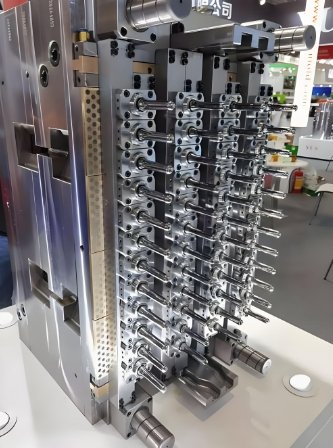
Medical devices require extreme precision. Medical injection molding produces accurate, high-quality parts. A skilled mold maker ensures consistency. This process is essential for modern healthcare.
1. What is Medical Injection Molding?
Definition
Medical injection molding is a process that shapes plastic into medical components. It involves melting plastic and injecting it into a mold. The material cools and hardens into the final shape.
Why It Matters
Healthcare devices need strict accuracy. Medical injection molding ensures uniform parts. This reduces defects and improves patient safety.
Common Medical Devices Produced
- Syringes
- Catheters
- Surgical tools
- Implantable devices
- IV components
2. The Importance of a Skilled Mold Maker
Creating Precision Molds
A mold maker designs detailed, high-precision molds. The process requires expertise in material selection and tooling.
Ensuring Consistency
Medical parts must meet strict tolerances. A well-made mold produces uniform parts.
Enhancing Production Efficiency
A high-quality mold lasts longer. It ensures smooth production with minimal waste.
3. The Injection Molding Process for Medical Devices
Step 1: Product Design
Engineers create a 3D model. The design must meet regulatory standards.
Step 2: Prototype Development
A test mold is created. The first samples are evaluated for accuracy.
Step 3: Mold Fabrication
A mold maker builds a durable mold. It is designed for high-volume production.
Step 4: Injection Molding Process
The plastic is heated and injected into the mold. The part cools and solidifies.
Step 5: Quality Control
Every part is inspected. Measurements and surface quality are verified.
Step 6: Large-Scale Production
After approval, mass production begins.
4. Key Materials in Medical Injection Molding
Biocompatible Plastics
- Polypropylene (PP) – Lightweight and chemical-resistant
- Polycarbonate (PC) – Impact-resistant and strong
- PEEK – Heat-resistant and durable
Medical-Grade Silicone
Used for soft, flexible medical devices. Ensures biocompatibility.
Resorbable Polymers
Used in implants that dissolve inside the body over time.
5. Cleanroom Manufacturing for Medical Parts
Why Cleanrooms Matter
Medical parts must be free from contamination. Cleanroom manufacturing prevents contamination.
ISO Cleanroom Standards
- ISO Class 7 – Used for most medical device production
- ISO Class 8 – Used for less critical applications
Strict Manufacturing Controls
Workers follow hygiene protocols. Machines are sanitized frequently.
6. Quality Assurance in Medical Injection Molding
Inspection Methods
- Visual Inspection – Detects surface defects
- Automated Scanning – Identifies microscopic flaws
- Dimensional Testing – Measures precision
Regulatory Compliance
- FDA Regulations – Ensures medical safety
- ISO 13485 Certification – Maintains strict quality control
- Good Manufacturing Practices (GMP) – Ensures consistent production
7. Advanced Medical Injection Molding Techniques
Micro-Molding
Used for tiny medical components. Essential for minimally invasive procedures.
Overmolding
Combines different materials for better grip and comfort.
Insert Molding
Encapsulates metal inserts inside plastic. Improves durability.
8. Scaling Up from Prototype to Mass Production
Challenges in Scaling Up
- Maintaining product consistency
- Meeting strict medical regulations
- Handling large production demands
How a Mold Maker Helps
A mold maker designs efficient molds. This ensures a smooth transition to mass production.
9. Preventing Defects in Medical Injection Molding
Strict Quality Checks
Each batch is tested. Even small defects are corrected.
Advanced Monitoring Systems
Real-time sensors detect molding issues early.
Regular Mold Maintenance
A well-maintained mold extends production life.
10. Innovations in Medical Injection Molding
Smart Medical Devices
Micro-molding supports wearable healthcare technology.
Sustainable Plastics
Eco-friendly materials reduce environmental impact.
AI in Quality Control
Automated defect detection increases efficiency.
11. Selecting the Right Medical Injection Molding Partner
Industry Experience
Look for a manufacturer with a strong track record.
Regulatory Compliance
Ensure the company follows FDA and ISO guidelines.
Production Capabilities
A reliable partner can handle both small and large orders.
Prototype Development
Early testing prevents costly mistakes.
Transparent Communication
Clear updates keep projects on track.
Medical injection molding plays a key role in healthcare. A skilled mold maker ensures precision and reliability. From concept to production, strict quality standards must be met. Choosing the right partner ensures success.
